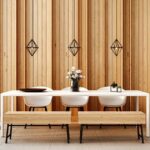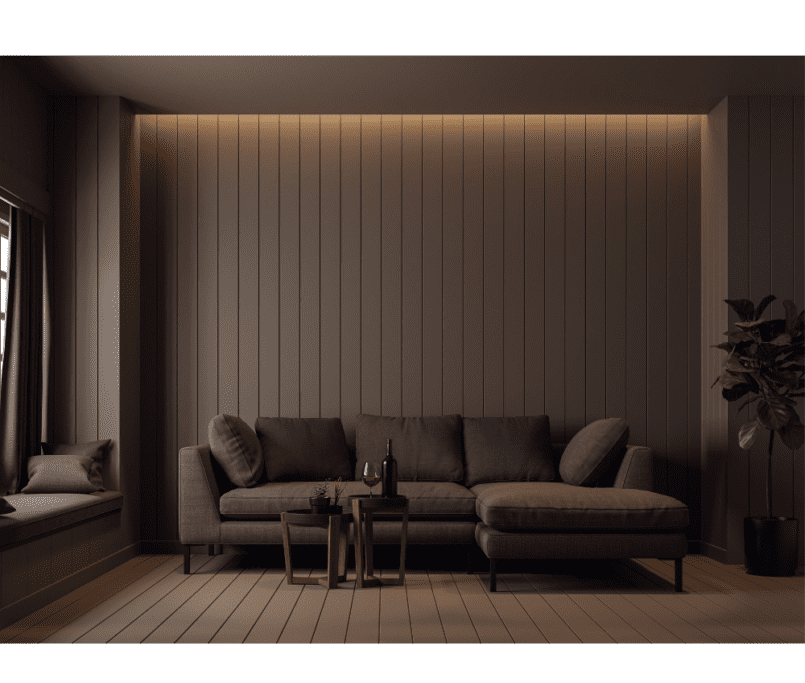Furniture modeling is creating digital representations of furniture using specialized software. It involves using 3D modeling techniques to design and build a table that can be viewed and manipulated in a virtual environment. Here’s a closer look at what furniture modeling involves:
Definition of Furniture Modeling
Furniture modeling is the process of creating digital models of furniture using specialized software. These models can be manipulated and viewed from different angles in a virtual environment. Furniture modeling is used by furniture designers, architects, and interior designers to visualize and create furniture designs before manufacturing.
Enhancing Interior Design with Technology
Furniture modeling refers to the creation of digital models of furniture using computer-aided design (CAD) software. With furniture modeling, designers can create 2D and 3D representations of furniture, allowing for accurate visualization of how furniture will look in a room.
The importance of furniture modeling in interior design is significant. With furniture modeling, interior designers can create photorealistic renderings of their creations, which can help clients visualize how their space will look. Furthermore, furniture modeling can save time and money by allowing designers to test different furniture layouts and styles before purchasing physical pieces.
The benefits of furniture modeling
Creating 3D models of furniture items using specialized software offers numerous advantages and applications in various fields, including architecture, interior design, e-commerce, and online shopping
Improved Design Accuracy and Precision
Creating 3D models of furniture enables designers and manufacturers to produce highly accurate and precise designs that can be visualized and tested before being manufactured. This technology provides a detailed 3D view of the final product, which helps designers identify and fix any potential design flaws or issues. This helps to ensure that the final product meets the desired specifications and standards.
Reduced Time and Costs
3D modeling of furniture can significantly reduce the time and costs associated with traditional furniture design and production methods. The use of digital modeling tools and software allows designers and manufacturers to create and test multiple design iterations quickly and easily, without the need for physical prototypes. This reduces the time and costs associated with creating and testing physical prototypes, allowing for faster and more cost-effective production.
Enhanced Customization and Personalization
3D modeling of furniture also allows for enhanced customization and personalization options. With digital modeling tools, designers can create bespoke designs that meet the specific needs and preferences of their clients. Customers can also visualize and customize their furniture before it is produced, enabling them to make informed decisions and ensure that the final product meets their expectations.
Improved Marketing and Sales
3D modeling of furniture can also be used as a powerful marketing and sales tool. With 3D models and digital product images, manufacturers and retailers can showcase their furniture items in an attractive and interactive manner, enabling customers to visualize and experience the product before making a purchase. This can lead to increased sales and customer satisfaction.
Increased Sustainability and Reduced Waste
3D modeling of furniture can also contribute to increased sustainability and reduced waste in the manufacturing process. With digital modeling tools, designers can optimize the use of materials, reducing waste and minimizing the environmental impact of furniture production. This can help to promote more sustainable and responsible manufacturing practices.
Software Used for Furniture Modeling
Several software programs are available for furniture modeling. AutoCAD is a popular software used for creating 2D and 3D models. SketchUp is another commonly used valuable software for creating 3D models quickly and easily. 3D Studio Max is a more advanced software widely used for creating photorealistic renderings. Lastly, Blender is a free and open-source software helpful in creating 3D models for gaming and animation.
Techniques for Furniture Modeling
There are several furniture modeling techniques, each with advantages and disadvantages. Box modeling involves starting with a basic shape and adding details as needed. This technique helps create organic shapes. Polygon modeling involves creating a mesh of interconnected polygons to create a 3D profile. NURBS modeling consists in creating 3D shapes using mathematical equations, which results in smooth surfaces. Lastly, subdivision modeling involves starting with a low-resolution model and gradually increasing the level of detail.
Materials Used for Furniture Modeling
Designers can create furniture models using various materials, including wood, metal, glass, and plastic. Each material has its unique properties, which must be considered when modeling. For example, wood has a grain that must be accounted for, while metal may have a reflective surface that requires special lighting.
Challenges Faced
While furniture modeling offers numerous benefits, some challenges must be addressed. Complex designs can be challenging to model, particularly when creating intricate details. Realistic texturing can also be challenging, particularly when creating textures for materials such as wood and metal. Lighting can also be difficult, as it is essential to develop lighting that accurately reflects how the furniture will look in a specific space. Lastly, rigging and animation can be complex, particularly when creating realistic furniture movements.
The Process of Furniture Modeling
Furniture modeling is a complex process that involves several steps. Here’s a closer look at what the process entails:
Concept Development
The first step in furniture modeling is concept development. This involves creating a rough sketch or design concept of the furniture. The idea should include the furniture’s overall shape, dimensions, and critical features.
3D Modeling
The next step in furniture modeling is 3D Modeling. This involves creating a digital model of the furniture using specialized software. The software allows designers to create a 3D model that can be viewed and manipulated in a virtual environment.
Refinement
Once the 3D model is created, it must be refined. This involves adding details to the model, such as textures, finishes, and intricate details. The refinement process allows designers to change the design and ensure it meets the desired specifications.
Rendering
After the refinement process is complete, the furniture model can be rendered. Rendering involves creating photorealistic images of furniture design. The images can be used to showcase the design to clients and manufacturers.
Production
Once the furniture model is complete, it can be sent to production. Production involves using specialized machinery and techniques to create physical furniture. The final product should closely resemble the digital model.
Textures play a critical role in furniture modeling. They bring realism and depth to the digital model, making it look more convincing and appealing. In this article, we’ll cover the following topics related to textures in furniture modeling:
Definition of Textures
Textures are surface patterns applied to a digital model to give it a more realistic look and feel. These patterns range from simple colors and gradients to complex images of wood grains, metal finishes, or fabrics. Textures add depth and detail to the furniture model, making it more lifelike and visually appealing.
Types of Textures
There are several types of textures
Diffuse Textures:
These textures are used to define the color and brightness of the surface of the furniture model.
Normal Maps:
These textures define the surface’s orientation, giving the model a 3D appearance.
Specular Maps:
These textures are used to define the reflective properties of the surface of the furniture model.
Bump Maps:
These textures are used to simulate the appearance of surface roughness, adding detail to the model.
Importance of Texture Resolution
Texture resolution refers to the number of pixels used to create the texture. Higher texture resolution means more detail, but it also means a larger file size. In furniture modeling, it’s crucial to use high-resolution textures to ensure the model looks realistic and convincing. Low-resolution textures can result in a blurry, pixelated appearance, a significant drawback in product visualization.
Creating Realistic Textures
Furniture modeling refers to creating digital representations of furniture using specialized software. It involves using 3D modeling techniques to design and produce furniture that can be viewed and manipulated in a virtual environment.
Realistic textures are essential in furniture modeling because they help to create a more lifelike and immersive experience for the viewer. Adding textures to furniture models allows you to develop a sense of depth and dimensionality that makes the furniture appear more realistic and appealing.
Creating realistic textures can be divided into several steps. These include:
Understanding Textures
Textures are surface characteristics that define an object’s appearance to the touch or the eye. In furniture modeling, textures can simulate wood, metal, fabric, and leather materials. Understanding the types of textures commonly used in furniture modeling and their resolution is crucial to creating realistic textures.
Creating Textures
Creating textures involves gathering references, choosing the right tools, and following a workflow. Picking references involves finding images and samples of the materials you want to simulate. Choosing the right tools involves selecting software and tools best suited for creating textures. The workflow for creating textures involves steps like creating a base color, adding highlights and shadows, and adjusting the texture scale.
Applying Textures
Applying textures involves importing, mapping them onto furniture models, and adjusting their properties. Mapping textures defines how the surface is used in the furniture model. Changing texture properties involves tweaking the texture’s settings to achieve the desired look.
Final Touches
The final touches involve adding fine details and checking the overall look of the furniture model. Fine details can add imperfections, dirt, and wear and tear to the texture. Checking the overall look ensures the furniture model looks realistic and the surfaces are appropriately applied.
conclusion
In conclusion, furniture modeling is a valuable tool for designers and manufacturers. Using specialized software, designers can create digital furniture models and experiment with different materials and finishes. This saves time and resources and ensures the final product meets the desired specifications. Furniture modeling is an essential part of the design process and helps to bring furniture designs to life.






